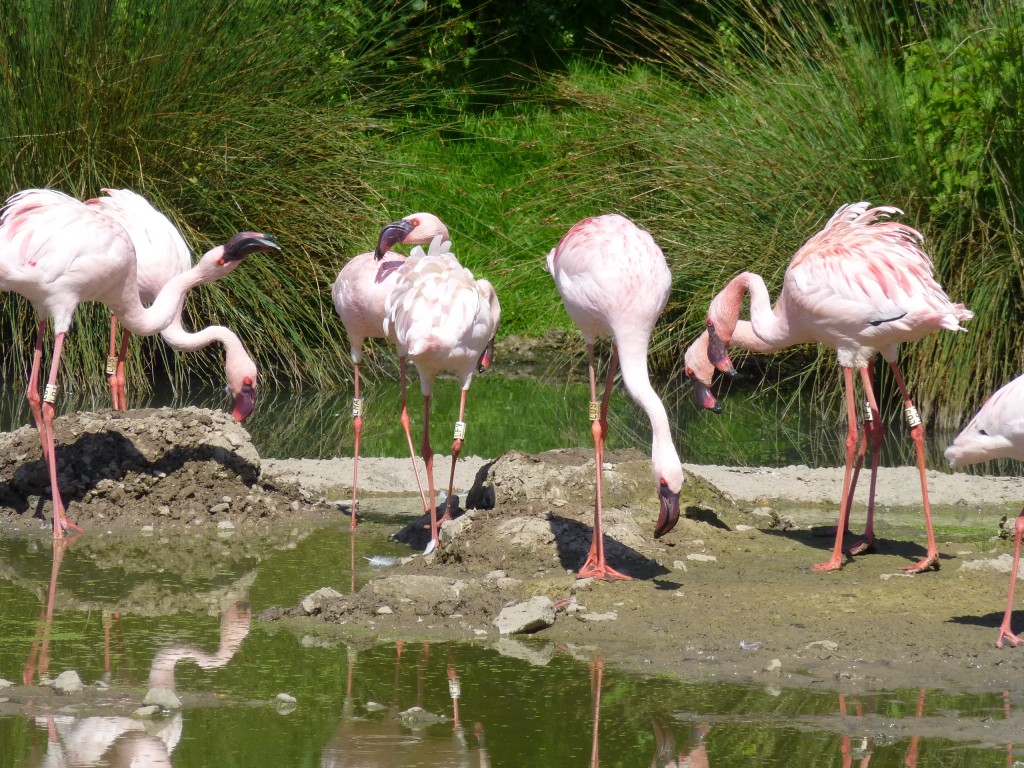The Indepedent Flamingo
Aside from my wanderings around, staring at and writing down about the Slimbridge flamingos, I am joined this year by two University of Exeter MSc students, Finn and Alyssa, who are helping categorise and evaluate the behaviour of the really large flocks of greater, Chilean and Caribbean flamingos. Collectively, together with information on the lessers and Andeans (and Mr James- love him) we will have a complete picture of flamingo social life at Slimbridge. What they do, why they do it and how does each species differ. So in this update I thought I would shed some light on which flamingos do not follow the crowd; those that really like to branch out on their own.
Broadly speaking, the birds at Slimbridge fall into three different camps. Those that LOVE their friends and invest their time mixing with only a handful of others. Those that really do not care who they hang around with and often go off by themselves. And those that fall in between and bumble around between different smaller groups within the flock.
So let's start by talking about Mr James. Because his behaviour fascinates me. OK, OK, you've got me. This post is really just an excuse to talk about him some more! Mr James is the definition of an independent flamingo. If he was a girl, I would be inclined to start singing some kind of Destiny's Child song here but I don't think he (or any of the human visitors to Slimbridge) would appreciate that. I always used to feel a bit sorry for him, all by himself, the last one of his species at WWT after his girlfriend died in 2010. But the more I observe what he does, the less inclined I am to worry that he is all alone. Because, to put it bluntly, Mr James is a bit of a tyrant. The Andeans dare not cross his path. He is the loudest and most vocal flamingo in that enclosure. He shrieks and whistles at all and sundry who walk anywhere near him. And woe betide any other bird that gets in his way at feeding time. You will get severely jabbed in the bum! He does join in with the Andean's activity when he wants to. And he can often be seen pushing his way to the front of any courtship dancing that they do. But I wouldn't really say he was a very social bird overall. Incidentally, if you talk to the Avics about his deceased "wife", apparently he didn't get on with her either!
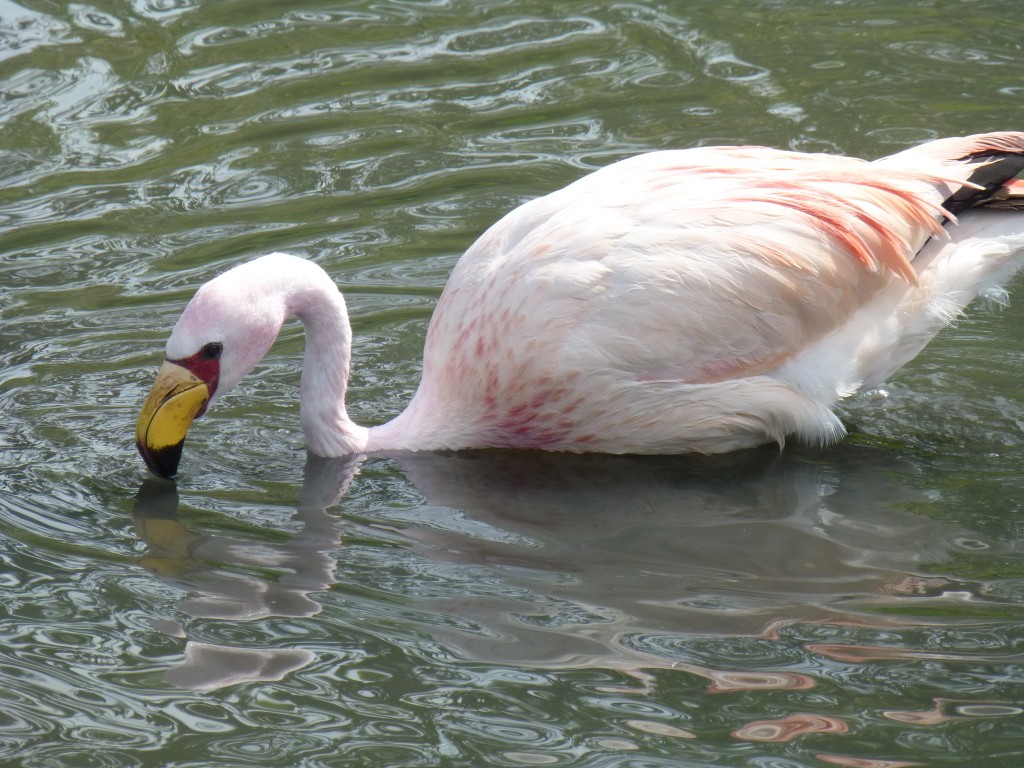
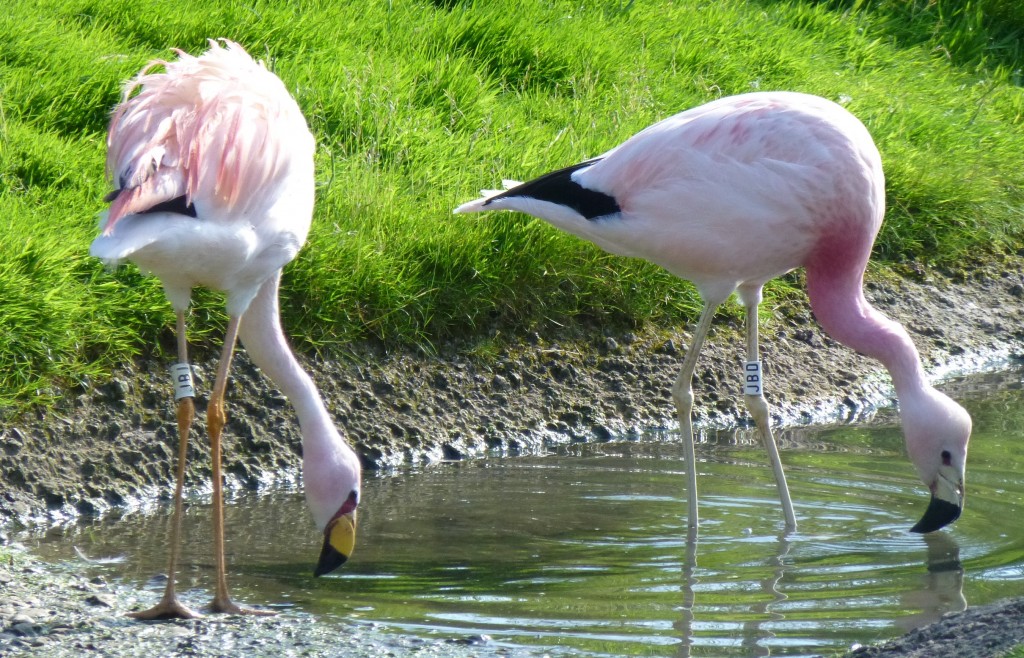
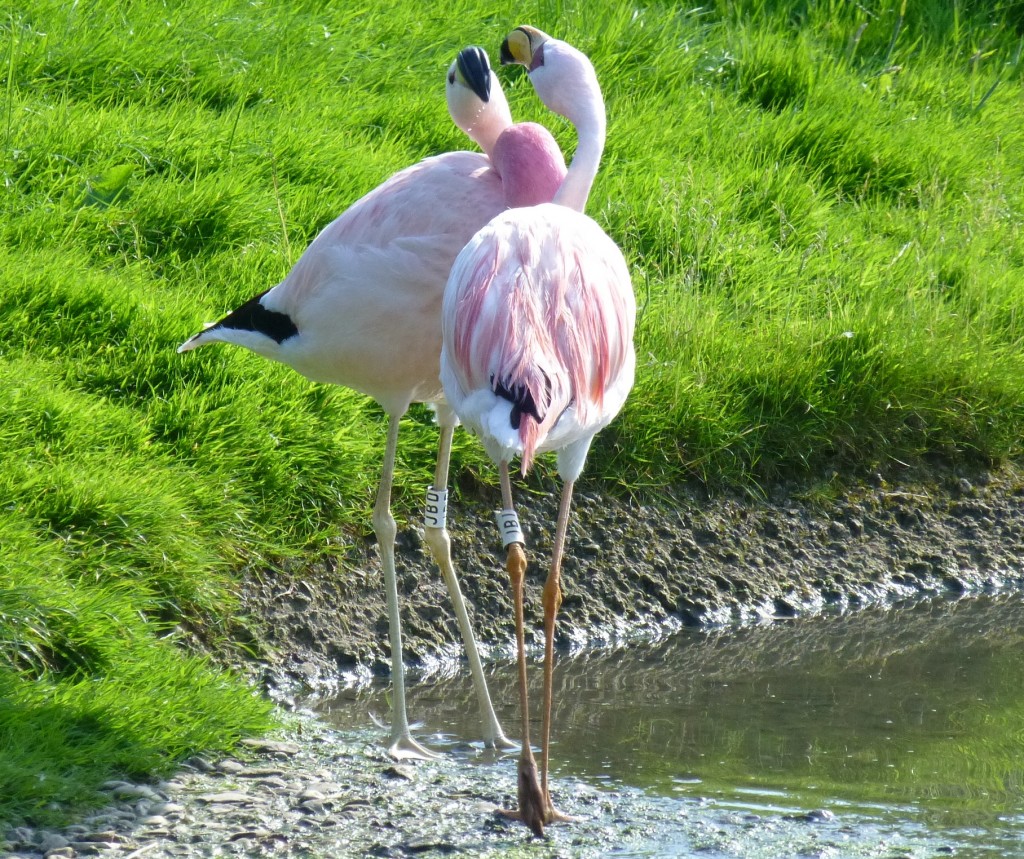
Compare this to two of his enclosure mates. A long-standing pair of Andean flamingos, "JBC" (a small female) and "JAK" (a very tall, and very handsomely bright pink, male). These flamingos really are love birds. They invest their time in themselves and only themselves. And that's about it. They are generally the one pair that you can see doing something a little different to the others and will often be separate to the rest of the flock.
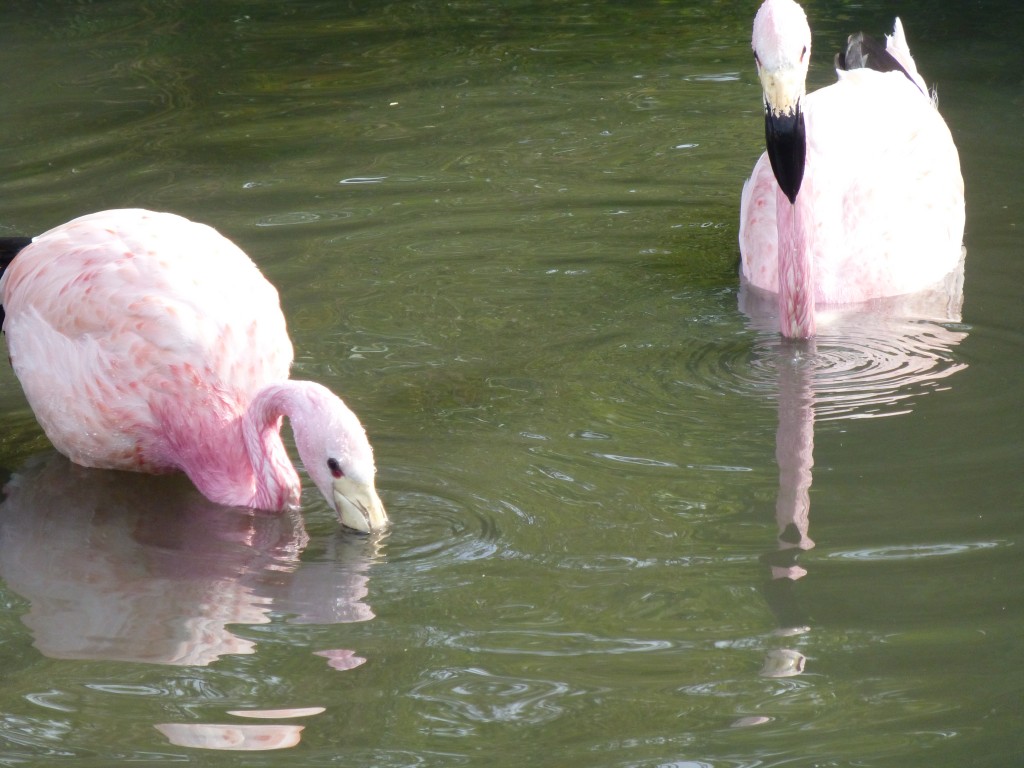
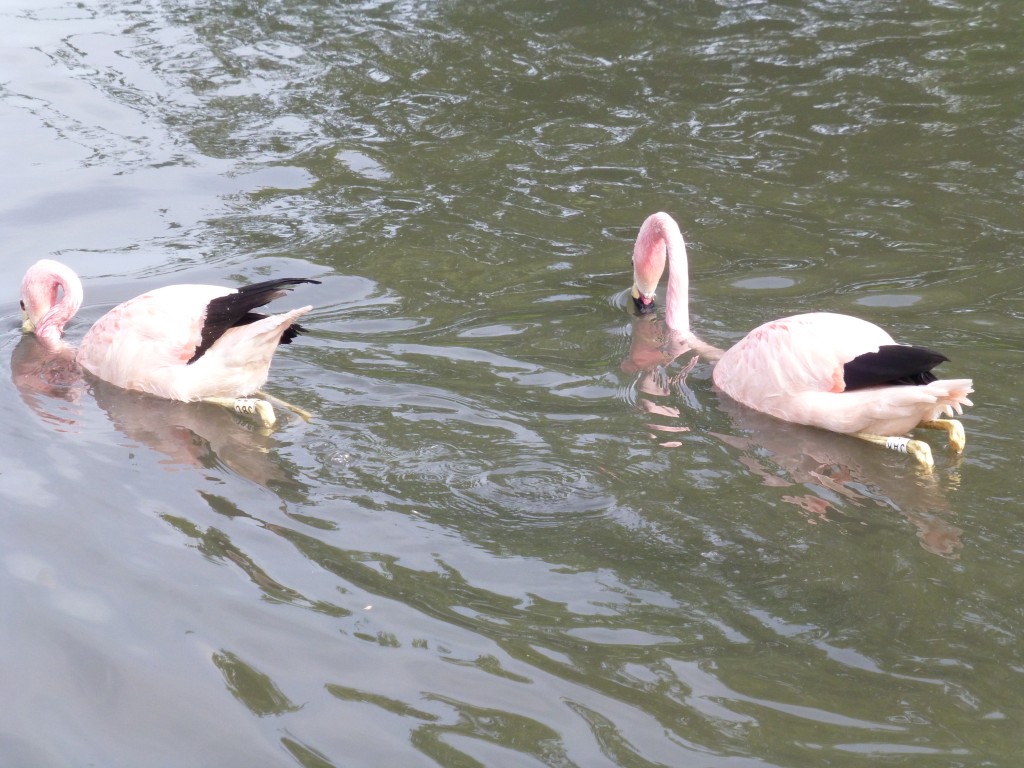
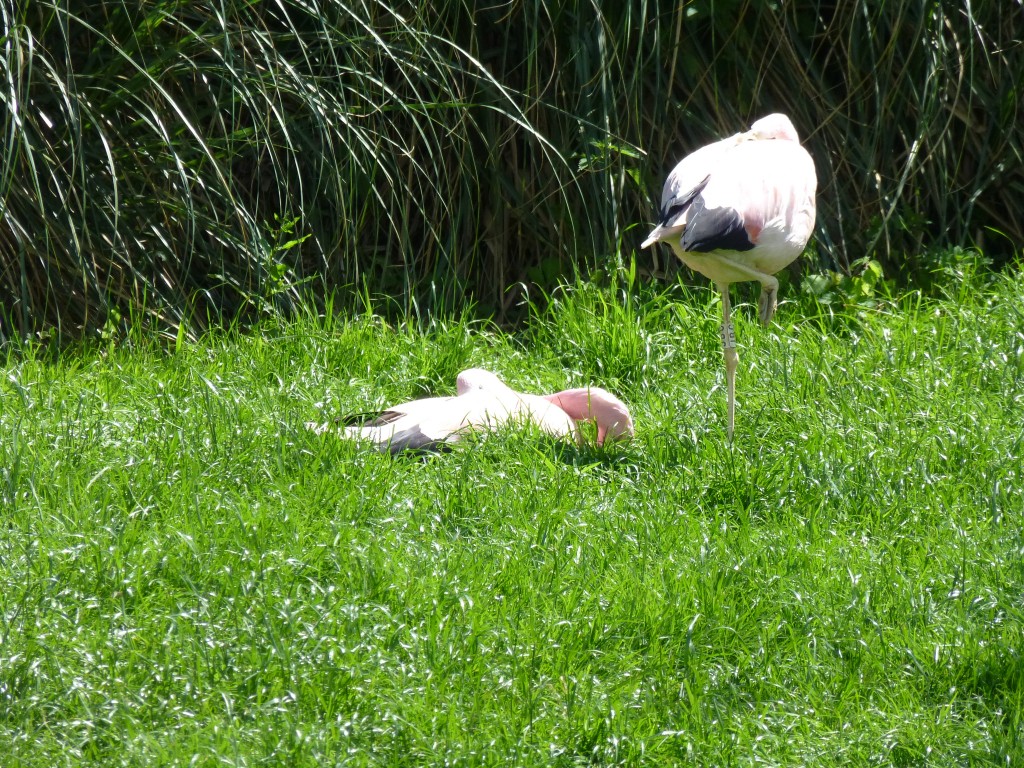
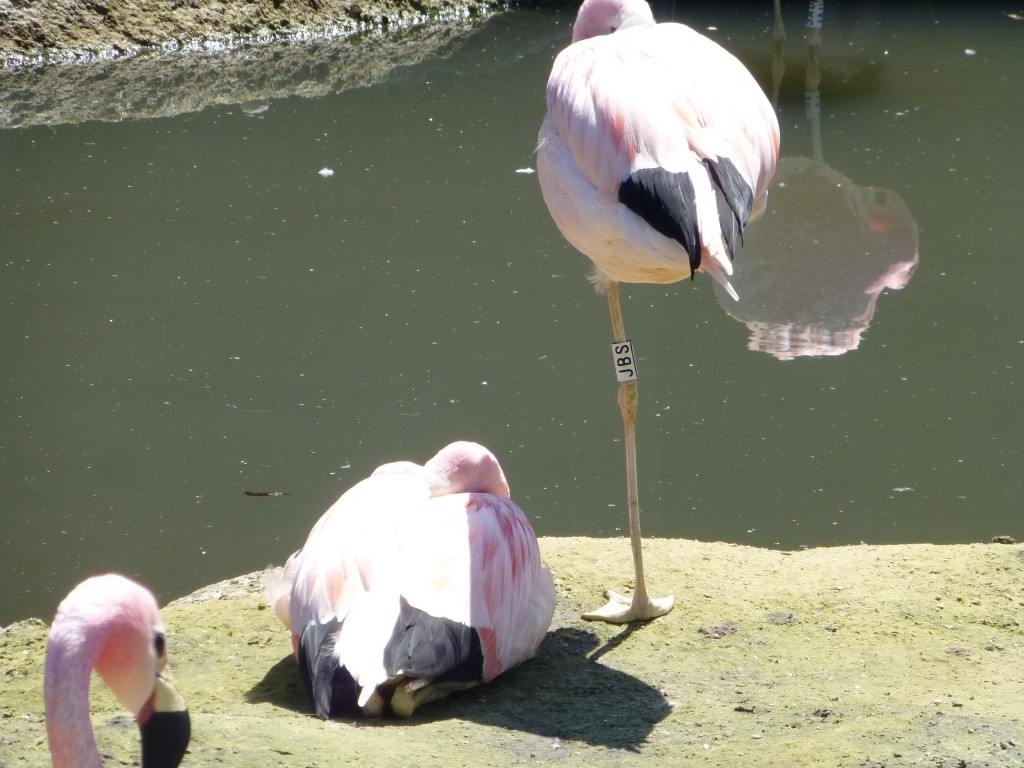
There's a very sweet Chilean flamingo in the South American Pen that is also quite the independent bird. She is easy to spot as she has a bright yellow leg ring with two black letters; and she is the only bird in the group to have a yellow tag in this fashion. This bird is often the first one to wade over to pinch the corn from the duck feed when it goes around in the afternoon. She also has a habitat of wandering around by the stepping stones. Allowing visitors to get up amazingly close. What is interesting is that her behaviour is sometimes copied by other birds in the flock. The Chileans always strike me as the group that is most easily offended. You annoy one, and you have annoyed them all. But sometimes, other birds decide that Mrs Yellow Tag must be doing something right so they will wander over and join in with her very public moochings. Watch out for this on your next visit.
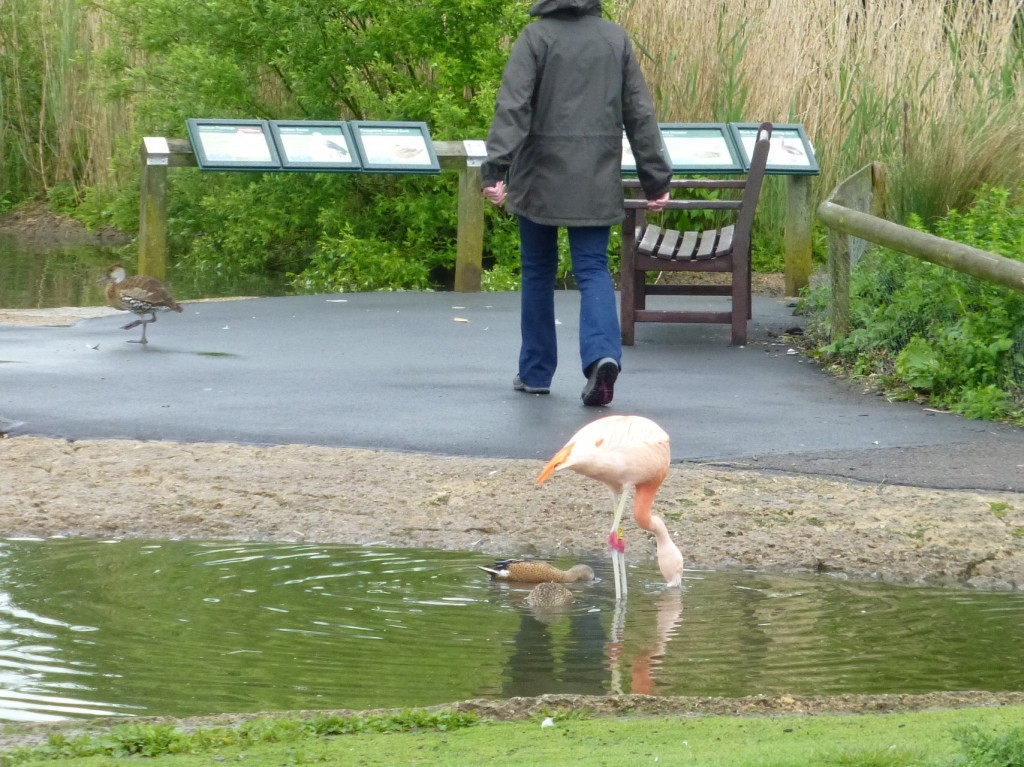
And what about those birds that flit around. I think this best sums up the flock of lesser flamingos. Yes, there are some stronger bonds between individuals in this flock but overall, they either do everything together. Or they branch off on their own. It is only at this time of the year do the lessers really think about investing their time more specifically. Currently, there is a lot of nest building and mating going on in their enclosure. So you will see pair-bonds form and birds start to challenge others for space, nest sites and the best location to be in. The lessers are a quieter, more refined flamingo. They don't have the shouting, argumentative streak of their larger, whiter cousins across the path, so they deserve a little more of your time to stand and contemplate what they do. It might take longer to appear, but their behaviour when it does show itself is well worth stopping to watch.
